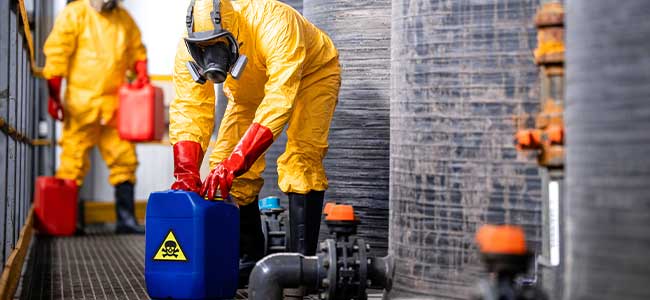
Choosing Chemical-Resistant Gloves
Understanding the importance of selecting appropriate chemical-resistant gloves via the Material Safety Data Sheet (MSDS) to ensure safety and prevent hand injuries in industrial settings.
- By Superior Glove Marketing Team
- Aug 01, 2024
Chemicals are a common part of many industrial settings and can be dangerous if not handled properly, leading to serious hand injuries. This is why it is important to know how to choose the right chemical gloves for your team.
The best way to shop for chemical gloves for your team is by first identifying the chemical being handled and then matching it with the glove material that resists that chemical. For this, you can ask an expert or consult the Material Safety Data Sheet (MSDS).
In this article, we will take a closer look at the MSDS, an instruction manual for chemicals designed to help you choose the right protection and ensure workplace safety.
Start With the Material Safety Data Sheet
The Material Safety Data Sheet (MSDS) details essential information about specific chemicals. It describes the properties and potential hazards of the material, how to use it safely, and what to do in an emergency. The purpose of this document is to assist in understanding and interpreting information.
Some of the important information covered in the MSDS to help choose the right safety gloves includes:
Chemical Identification
Correctly identifying the chemical is an important step in ensuring worker hand safety. The identification section of the MSDS contains the following information on specific chemicals:
Product name: This is the product identifier for a chemical. It also includes other means of identification such as product family and synonyms/common names. This information helps avoid any confusion in selecting the right MSDS.
Manufacturer information: This includes the manufacturer’s name, address and telephone number. This information can come in handy in case of any unexpected chemical exposure.
Recommended usage: The identification section also states the recommended use for the specific chemical. The recommendations provided in this section offer a good starting point for deciding where to use the chemical.
Hazard Identification
Effective hazard assessment is the foundation of workplace safety. This section includes the potential dangers of specific chemicals, from corrosive substances to flammable compounds. Understanding these hazards is essential for implementing adequate protective measures for workers’ safety.
Chemical Composition
The chemical composition section offers a comprehensive breakdown of the chemical makeup, including hazardous components and their concentration. This helps determine a product’s hazard level. To avoid any confusion, a CAS (Chemical Abstracts Service) number – a unique identifier for chemicals – is often listed as well. Since a chemical can have many different names, this identifier helps determine the exact one.
Personal Protection
This section identifies which type of personal protective gear is suitable for the chemical. Most MSDSs contain information on skin protection which informs employers about the type of chemical-resistant gloves required to handle specific chemicals. This also helps in determining the right material with higher permeation times— time it takes for the chemical to penetrate the glove.
While there are several other components of the MSDS sheet, the ones discussed above offer key information on chemicals being used and the type of protection required against them. Accurate risk assessment, guided by insights from MSDS, facilitates the usage of appropriate PPE tailored to the specific chemical hazards present in the workplace.
This article originally appeared in the July/August 2024 issue of Occupational Health & Safety.
About the Author
This article was produced by the marketing team at hand-protection manufacturer Superior Glove.